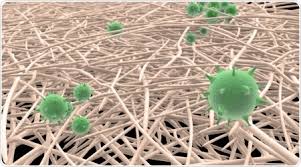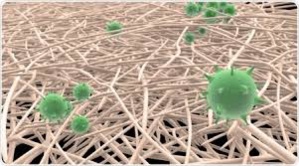Some auto suppliers in Japan are being led to turn to what seems like an unlikely substitute for steel – wood, by the global push among carmakers to make ever lighter vehicles.
A material made from wood pulp weighs just one fifth of steel and can be five times stronger, say Japanese researchers and auto component makers.
Although facing competition from carbon-based materials, and remains a long way from being commercially viable, the material, cellulose nanofibres, could become a viable alternative to steel in the decades ahead, they say.
As manufacturers move to bring electric cars into the mainstream, reducing the weight of a vehicle will be critical. a reduction in car weight will mean fewer batteries will be needed to power the vehicle, saving on costs as batteries are an expensive but vital component.
"Lightweighting is a constant issue for us," said Masanori Matsushiro, a project manager overseeing body design at Toyota.
"But we also have to resolve the issue of high manufacturing costs before we see an increased use of new, lighter-weight materials in mass-volume cars."
working with plastics incorporated with cellulose nanofibres - made by breaking down wood pulp fibres into several hundredths of a micron (one thousandth of a millimetre) are researchers at Kyoto University and major parts suppliers such as Denso, Toyota's biggest supplier, and DaikvoNishikawa.
The potential for cellulose nanofibres to be used in cars has been enabled by the "Kyoto Process to slash the cost of production to roughly one-fifth that of other processes even as it has been used in a variety of products ranging from ink to transparent displays. While simultaneously being broken down into nanofibers, the "Kyoto Process" chemically treated wood fibres are kneaded into plastics.
"This is the lowest-cost, highest-performance application for cellulose nanofibres, and that's why we're focusing on its use in auto and aircraft parts," Kyoto University Professor Hiroaki Yano, who is leading the research, told Reuters in an interview.
a prototype car using cellulose nanofibre-based parts to be completed in 2020 is being currently developed by the university, along with auto parts suppliers.
"We've been using plastics as a replacement for steel, and we're hoping that cellulose nanofibres will widen the possibilities toward that goal," said Yukihiko Ishino, a spokesman at DaikyoNishikawa, which counts Toyota Motor and Mazda Motor among its customers.
Other lightweight substitutes are also being used by automakers. While high-tensile steel and aluminium alloys are currently the most widely used lightweight options because they are cheaper and recyclable, BMW uses carbon fibre reinforced polymers (CFRPs) for its i3 compact electric car as well as for its 7 series.
A photo of the "Spruce Goose", a cargo plane made almost entirely of wood in 1947 by U.S. billionaire entrepreneur Howard Hughes was the inspiration for Yano, he said. It was the world's largest aircraft at the time.
"I thought that if Howard Hughes could find a way to use wood to build a massive plane, why not use wood to make a material that was as strong as steel," he said.
(Source:www.cnbc.com)
A material made from wood pulp weighs just one fifth of steel and can be five times stronger, say Japanese researchers and auto component makers.
Although facing competition from carbon-based materials, and remains a long way from being commercially viable, the material, cellulose nanofibres, could become a viable alternative to steel in the decades ahead, they say.
As manufacturers move to bring electric cars into the mainstream, reducing the weight of a vehicle will be critical. a reduction in car weight will mean fewer batteries will be needed to power the vehicle, saving on costs as batteries are an expensive but vital component.
"Lightweighting is a constant issue for us," said Masanori Matsushiro, a project manager overseeing body design at Toyota.
"But we also have to resolve the issue of high manufacturing costs before we see an increased use of new, lighter-weight materials in mass-volume cars."
working with plastics incorporated with cellulose nanofibres - made by breaking down wood pulp fibres into several hundredths of a micron (one thousandth of a millimetre) are researchers at Kyoto University and major parts suppliers such as Denso, Toyota's biggest supplier, and DaikvoNishikawa.
The potential for cellulose nanofibres to be used in cars has been enabled by the "Kyoto Process to slash the cost of production to roughly one-fifth that of other processes even as it has been used in a variety of products ranging from ink to transparent displays. While simultaneously being broken down into nanofibers, the "Kyoto Process" chemically treated wood fibres are kneaded into plastics.
"This is the lowest-cost, highest-performance application for cellulose nanofibres, and that's why we're focusing on its use in auto and aircraft parts," Kyoto University Professor Hiroaki Yano, who is leading the research, told Reuters in an interview.
a prototype car using cellulose nanofibre-based parts to be completed in 2020 is being currently developed by the university, along with auto parts suppliers.
"We've been using plastics as a replacement for steel, and we're hoping that cellulose nanofibres will widen the possibilities toward that goal," said Yukihiko Ishino, a spokesman at DaikyoNishikawa, which counts Toyota Motor and Mazda Motor among its customers.
Other lightweight substitutes are also being used by automakers. While high-tensile steel and aluminium alloys are currently the most widely used lightweight options because they are cheaper and recyclable, BMW uses carbon fibre reinforced polymers (CFRPs) for its i3 compact electric car as well as for its 7 series.
A photo of the "Spruce Goose", a cargo plane made almost entirely of wood in 1947 by U.S. billionaire entrepreneur Howard Hughes was the inspiration for Yano, he said. It was the world's largest aircraft at the time.
"I thought that if Howard Hughes could find a way to use wood to build a massive plane, why not use wood to make a material that was as strong as steel," he said.
(Source:www.cnbc.com)






